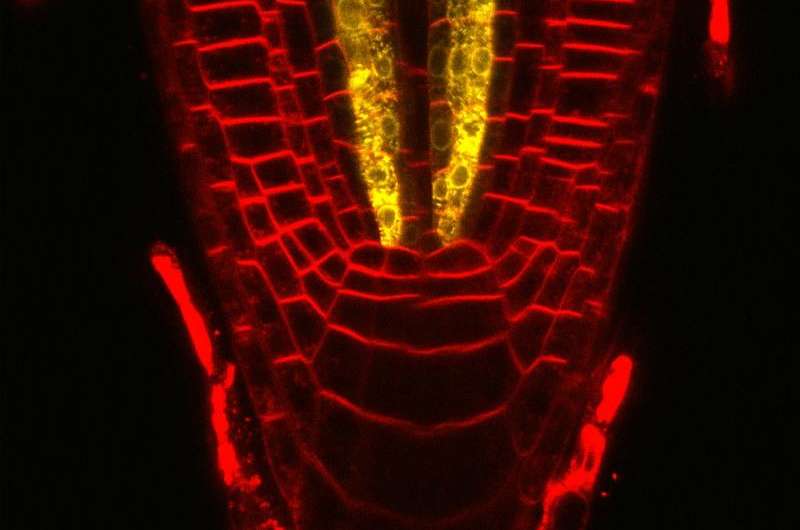How plants form their sugar transport routes

In experiments on transport tissues in plants, researchers from Heidelberg University were able to identify factors of crucial importance for the formation of the plant tissue known as phloem. According to Prof. Dr Thomas Greb of the Centre for Organismal Studies (COS), these factors differ from all previously known factors that trigger the specification of cells. The findings of the Heidelberg researchers substantially expand our understanding of the metabolic processes in plants. Their results were published in the journal Current Biology.
Phloem, also called bast, is a vascular tissue that runs through all the organs of plants. It transports sugars formed in the leaves during photosynthesis. "In the course of our research on plant development, we discovered three main factors that are critical for the formation of phloem," states Thomas Greb. These factors are the proteins SMXL3, SMXL4, and SMXL5. They act in the nuclei of cells that develop into phloem tissue, and from there alter the cells to specialise in transport. The researcher explains that the factors are similar to others involved in hormonal signal transmission – but they do not react to these hormones. This unresponsiveness is crucial for building robust phloem tissue and therefore for the growth of the plant in general.
"Until now, we understood very little about phloem formation, which is why our results open up new areas of research in a number of ways," explains the Heidelberg biologist. The researchers hope to gain new insights into the regulation of long-distance transport of sugars and metabolic products. How plants react to their environment through the formation of bast could also be studied in greater detail. "That gives us vital clues about the evolution of plants," says Prof. Greb, who directs the Developmental Physiology working group at the COS.
More information: Eva-Sophie Wallner et al. Strigolactone- and Karrikin-Independent SMXL Proteins Are Central Regulators of Phloem Formation, Current Biology (2017). DOI: 10.1016/j.cub.2017.03.014
Journal information: Current Biology
Provided by Heidelberg University



















